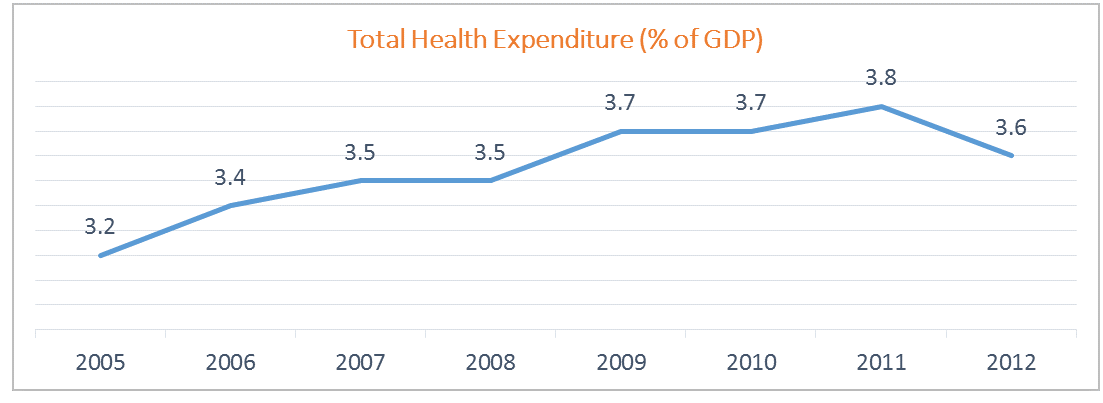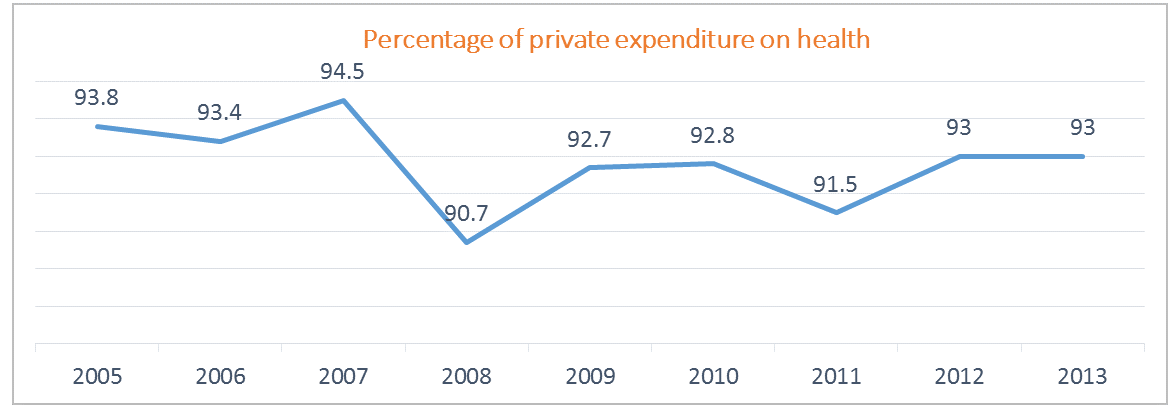GET IN TOUCH
- Please wait...

Currently the 57th largest economy in the world, Bangladesh has been making significant socio-economic developments in recent years. Yet, despite improving healthcare indicators such as a decline in mortality rates and an increase in average life expectancy, the health sector of the country is yet to reach its full potential. In fact, Bangladesh is one of the ten countries with the lowest health expenditure. However, reform policies coupled with innovation and investment by the private sector may translate into a rapid rise in this sector.
This segment of the sector report covers the status quo and industry vitals. Later segments will cover individual aspects such as changes occurring in the industry, government initiatives, private sector developments, and the overall way forward.
Levels of Medical Care
The lack of adequate healthcare facilities is leading to a greater portion of personal income being spent on healthcare. According to the Household Income and Expenditure Survey, only a meager 24.6% of Bangladeshi families were covered by the social safety net program in 2010 compared to the global average of almost 60%. Meanwhile, the total functional beds are 92,404- which means 0.6 beds per 1000 people against the WHO recommended amount of 3.5 per 1000.
Although the percentage of GDP being spent on the healthcare sector is relatively higher than it used to be, it is still very low compared to developed countries which spend 8-12% of GDP on health. Moreover, public money in this sector in developed nations is three times private money, whereas, in Bangladesh, the government contribution to health expenditure is only about 1.1%. About 60% of the public financing is done by the Government out of tax revenues and development outlays, while international development assistance funds the remaining 40%.

The fact that more than two-thirds of total health expenditure is out-of-pocket (privately financed) indicates that people are willing to pay for better healthcare. On the other hand, it also means that the lower quin-tile are forced to pay for health care when their ability to pay is at the lowest limit. A few NGOs have started a health insurance component within their package of micro-credit programs.
Other than this, such community financing mechanisms and risk-pooling systems are virtually non-existent. In Bangladesh, supply-side financing has historically been the backbone of health care services as a strategy to improve the access of poor households to essential health care services. But now it is implementing some activities under the demand-side financing mechanisms, such as a maternal health voucher scheme in 33 Upazilas, which was found to significantly improve access equity and utilization of maternal health services.

A brief overview of the healthcare situation in the capital Dhaka may be used as a snapshot of the healthcare sector status in Bangladesh. The majority of high-quality medical institutions are centered in the city of Dhaka and it acts as the hub for medical service dissemination across the country.
A comprehensive dissection of the private sector hospitals in Bangladesh will be presented in the blog soon.
Research Team
Tasmia Tabassum, Junior Associate, LightCastle Partners
Mohammad Kashif Choudhury, Assistant Vice President, LightCastle Partners

Our experts can help you solve your unique challenges
Stay up-to-date with our Thought Leadership and Insights